Rating and value of Empire rifles, model 1777, infantry
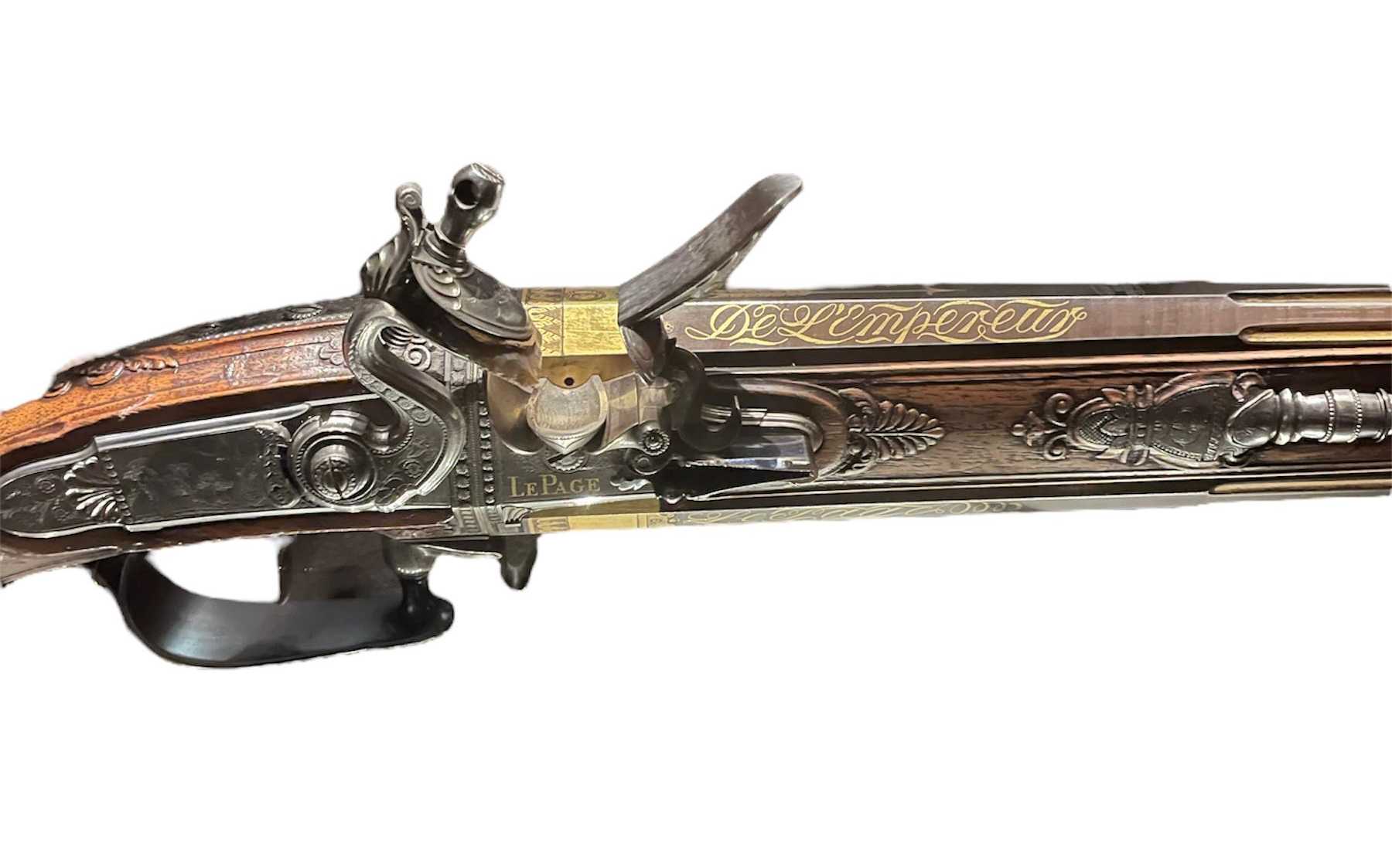
If you own a 1st Empire rifle, and would like to know its value, or if you don't know, the period and model of your weapon, our state-approved experts and auctioneers will offer you their appraisal services. Our specialists will carry out a free appraisal of your work, and provide you with a precise estimate of its value on today's market. Then, if you wish to sell your work, we'll guide you towards the best possible arrangement to obtain the optimum price.
Rating and value of 1st Empire rifles
Ist Empire rifles are sought-after items by collectors. However, price differences can be considerable, depending on order, state of preservation, who owned it, and other criteria. Nowadays, prices for these objects can rise considerably under the auctioneer's hammer. Buyers from all over the world are interested in the sale of certain rare pieces. The price at which they are sold on the art market ranges from €50 to €7,470, at the moment - a considerable difference, but one that says a lot about the value that can be attributed to these weapons. In 2022, an imperial rifle model 1777 corrected and manufactured by the Manufacture Impériale de Versailles, dating from 1811 with bronze fittings, sold for €7,470, whereas it was estimated at between €1,000 and €1,200.
Value order ranging from simple to prestigious
Rifle type | Results |
|---|---|
1777 infantry regulation rifle, unsigned | From €50 to €1,900 |
1777 regulation rifle converted to percussion rifle | From €80 to €1,530 |
1777 regulation rifle from an imperial factory | From €100 to €16,930 |
Response in less than 24h
A look back at the history of the French rifle
In the 16th century, the spinning-wheel mechanism appeared in Europe, after the wick mechanism. Spinning-wheel weapons are the oldest. Soldiers soon realized that they had major drawbacks. At the beginning of the 19th century, during the Empire, these weapons were mostly decorative, and the spinning-wheel pistols of the First Empire were owned by high-ranking civil servants as a symbol.
The Empire largely developed the flint system, which had been introduced under the Ancien Régime just before the Revolution, but was still little used.
In the 17th century, wheel-action muskets dominated the arms market, and were the best-sellers. In the 18th century, they were still sold, but wick-action muskets became more popular; they were lighter and shot farther than arquebuses, but in the end they used the same mechanism, only the size changed between the musket and the arquebus.
The rifle really came into its own with the flintlock patina and the 1717 infantry model, the first regulation rifle.
Gribeauval made a number of modifications to perfect it.
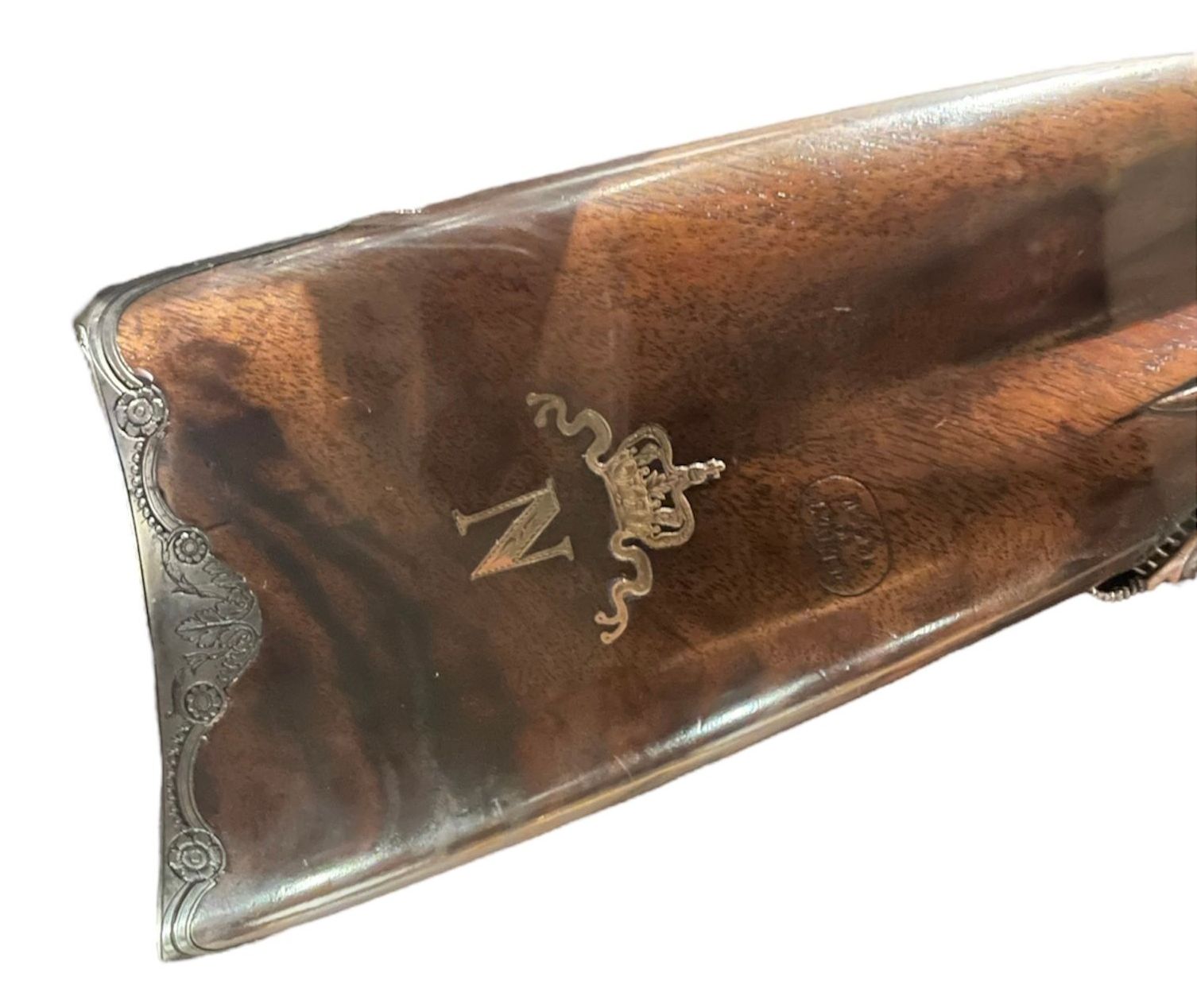
The 1777 infantry model, rifle of the Empire Wars
Gunner Gribeauval develops the 1777 rifle, the culmination of the flintlock patina. The Grande Armée fought all the wars of the Empire with these weapons. It's a single-shot, smooth-bore rifle (no grooves inside the barrel), measuring 1.52 meters, and almost two when a bayonet is added.
Brass is no longer the default component, and copper is chosen for the receiver, which is less susceptible to corrosion. The rifle is highly resistant and can fire up to 25,000 shots.
This was the first gun to be produced in a standardized way. This greatly facilitated repairs, and the rifle's parts were also standardized, which improved the work of the manufacturers. Production of the 1777 rifle was not yet industrialized, however, until the Chassepot model of 1866. Nevertheless, the 1777 infantry model remained a very important weapon in the French Army. It reached its apogee during the First Empire, but continued to be used by the military during the Franco-Prussian conflict, as a complement to other assault weapons.
Reasons to auction a 1777 infantry rifle
If you own an Empire weapon and don't know how to sell it, auctions are the answer. Indeed, collectors use this medium to find models that correspond to a particular battle or that belonged to their ancestors. Auctions go up quickly, with some rifles fetching thousands of euros at auction.
These objects are not only weapons, but also historical evidence of the scientific evolution of French weapons design.
Knowing the value of a 1777 rifle
If you happen to own a 1777 rifle, and would like to know its value, don't hesitate to request a free appraisal using the form on our website. A member of our team of experts and certified auctioneers will contact you promptly to provide you with an estimate of the market value of your piece, as well as all the relevant information about it. If you wish to sell your property, our specialists will also be on hand to help you find alternatives for selling it at the best possible price, taking into account market trends.
Response in less than 24h
Related topics
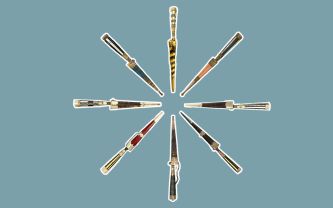
The value of Corsican weapons, styli, knives and pistols
The Corsican stylet or the appearance of a purely identity weapon The stylet is a Corsican knife resembling a dagger and being able to reach 40cm
Read more >
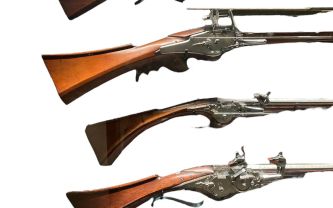
Rating and value of North European roller harquebuses
Northern European spinning-wheel harquebuses are antique weapons prized by collectors at auction. They have a high value.
Read more >
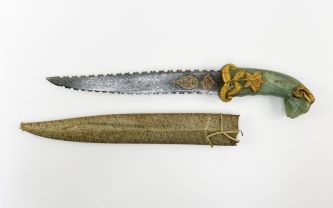
2024 quotation and value of Mughal daggers
Mughal daggers are historically valuable weapons from Indian collections. They are highly prized on the auction market.
Read more >
Secure site, anonymity preserved
State-approved auctioneer and expert
Free, certified estimates